Sanwa DLC470 Handleiding
Sanwa
Meetapparatuur
DLC470
Bekijk gratis de handleiding van Sanwa DLC470 (3 pagina’s), behorend tot de categorie Meetapparatuur. Deze gids werd als nuttig beoordeeld door 115 mensen en kreeg gemiddeld 4.6 sterren uit 58 reviews. Heb je een vraag over Sanwa DLC470 of wil je andere gebruikers van dit product iets vragen? Stel een vraag
Pagina 1/3

− 1 − − 2 − − 3 − − 4 − − 5 −
[1] SAFETY PRECAUTIONS
*Before use, read the following safety
precautions.
This instruction manual explains how to use
your digital leakage clamp meter DLC470.
Before use, please read this manual thoroughly
to ensure correct and safe use. After reading it,
keep it together with the product for reference
to it when necessary.
Using the product in a manner not specified in
this manual may cause damage to the protection
function of the product.
The instructions given under the headings of
WARNING and CAUTION must be followed
to prevent accidental and burn electric shock.
1-1 Explanation of Warning Symbols
The meanings of the symbols used in this
manual and attached to the product are as
follows:
: Very important instructions for safe use.
The warning messages are intended to
prevent accidents to operating personnel
such as burn and electric shock.
The caution messages are intended to
prevent incorrect handling which may
damage the product.
: High voltage hazard : Ground
: Resistance : Buzzer
: Backlight
: Double insulation or reinforced insulation
1-2 Warning Messages for Safe Use
The following instructions are intended to
prevent personal injury such as burn and
electric shock.
Be sure to follow them when using the meter.
1. Never use the meter for the power lines
exceeding 600 Vrms to ground.
2. Voltages over AC 30 Vrms (42.4 Vpeak)
or DC 60 V are hazardous to human
body. Take care so as not to touch them.
3. Never input signals exceeding the
maximum rated input value (see 1-3).
4. Never use the meter near equipment
which generates strong electromagnetic
waves or is charged.
5. Never use the meter if the meter or test
leads are damaged or broken.
6. Never use the meter with the case or
battery lid removed.
7. During measurement, keep your fingers
behind the finger guard of test leads
and the meter of the test leads.
8. During measurement, do not change
function switch of the meter nor replace
the plugs to other terminals.
9. Before starting measurement, make
sure that the function and range are
properly set.
10. Never use the meter when it is wet or
with wet hands.
11. Be sure to use the specified type of test
leads.
12. Never attempt repair or modification,
except for battery replacement.
13. Always conduct start-up inspection and
check the meter at least once a year.
14. This meter is for indoor use only.
1-3 Overload Protection
The maximum rated input value and overload
protection have been established for the input
terminals of each function.
Function Input
Terminal
Max. Rated
Input Value
Max. Overload
Protection
DCV・ACV
and
DC/AC
600 V DC/AC
660 V
Do not input
voltage
ACmA CT AC 600 mA AC 100 A
ACA AC 400 A AC 450 A
[2] APPLICATIONS AND FEATURES
2-1 Applications
This is a digital leakage clamp meter designed
for measurement in the ranges of CAT. III 600 V.
This meter is useful for measuring leakage or
load current on power lines and equipment.
2-2 Features
•
Compatible to IEC61010 CAT.III
•
Extract frequency range of mainly ACmA 50
Hz / 60 Hz and ACA, with band-pass filter
functions.
•
Measures mA with resolution 0.01 mA
•
MAX MIN hold and data-holding functions
•
Backlight function
•
Auto Power Off function
Measurement categories (Overvoltage
categories)
CAT. II : Primary circuit of equipment with a
power cord to be connected to a mains
socket.
CAT.III :
Primary circuit of equipment that inputs
power directly from the distributor and the
circuit from the distributor to the mains
socket.
CAT.IV :
Circuit from the leading wire to the
distributor.
[3] NAMES OF COMPONENT UNITS
3-1 Main unit
Current Sensor (CT)
Barrier
CT trigger
Power / Function switch
HOLD button
BPF button
MAXMIN button
Display
Input Terminal (-)
Input Terminal (+)
Backlight button
3-2 Display
AUTO POWER OFF
AC
DC
Minus
polarity
Low battery indication
MAXMIN
Digit and
decimal point
BPF
DATA HOLD
UNIT
3-3 Test Lead
T
es pint s
T t )es probe(red
Finge guardr s
T t )es probe(blackPlugs
Remova tes pin covel t s r
In case of test pins cover attached: CAT.III 600V
In case of test pins cover removed: CAT.II 1000V
[4] DESCRIPTION OF FUNCTION
4-1 Power Switch and function switch
Turn this switch to turn on and off the power
and select a measuring function.
4-2 Data Hold function
When the HOLD button is pressed, the reading
indicated will be held with on the
display. The indicated reading will not change if
the input signal is changed. When this button is
pressed again, the function will be disabled and
the meter will return to the measurement mode.
Remarks:
• The function will be canceled at changing
measurement functions.
4-3 BPF Button (ACmA & ACA Function)
Will switch to no-filter mode BPF 50 Hz → → BPF
60 Hz no-filter mode each time you press the →
button. With this BPF function, you can extract
the frequency in which you would like to measure.
Remarks:
• Frequency Response
50 Hz BPF: Using 25 Hz - decrease to 15 %
(-16 dB), 100 Hz - decrease to 4 % (-27 dB)
60 Hz BPF: Using 30 Hz - decrease to 15 %
(-16 dB), 120 Hz - decrease to 4% (-27 dB)
• BPF frequency response curve
Remarks:
• Readings of current are not properly in BPF
function if measuring current frequency is
other than 50/60 Hz.
• If the measured current contains extremely
la r ge n oise, i t may not be pos sib l e to
measure correctly.
4-4 MAX/MIN function
When the MAX/MIN button is pressed, the
m e t e r e n t e r s M A X / M I N m o d e , f i x e s a
measuring range and turns on. Press
the button, to read MAX, MIN, current reading
sequence. Press the button for 1 sec. or more
to exit the MAX/MIN mode.
Remarks:
Function changes or functional operations will
cancel the function.
4-5 BACKLIGHT function
When the backlight button is pressed, the
backlight will be turned on. To disable the
function, the button is pressed again. The
backlight will be automatically turned off about
30 seconds after it is turned on.
4-6 AUTO POWER OFF function
The meter will go to AUTO POWER OFF function
to save battery life about 30 minutes after the
last function switch or button operation. To wake
up the meter, press any button or re-power on.
turns on while activating the function.
Remarks:
• Even in the AUTO POWER OFF mode, the
tiny power is still consumed. When the meter
is not going to be used for an extended
period of time, be sure to turn off the power
switch.
• To disable the function, turn the function
switch to position other than OFF while
holding the HOLD button. on the display is
turned off when the AUTO POWER OFF
function is disabled.
4-7 Low Battery indication
W h en t h e bu i l t -i n b a t t er i es h a v e b ee n
discharged and the voltage has dropped to
below about 2.2 V, appears on the display.
When the mark flickers or lights, replace both
two batteries with new ones.
[5] MEASURING PROCEDURE
1.
Do not apply an input signal exceeding
t h e m a xi m u m r a t ed i n p u t of ea c h
function.
2. During measurement, do not change
the function switch.
3. During measurement, keep your finger
behind the finger guard of the test lead
and the meter.
4. When measurement has been finished,
remove the test leads and CT from the
object measured and turn the function
switch to OFF position.
DIGITAL LEAKAGE
CLAMP METER
INSTRUCTION MANUAL
02-2205 2040 6011
DLC470
5-1 Start-up Inspection
Always conduct the start-up inspection to
ensure safety.
1.Be sure that when the meter is turned on, the
low battery indication is not flickering or
lit. If it is flickering or lit, replace the batteries
with new ones.
2.Do not use the meter if the meter or test lead
is damaged or broken.
3.Make sure the test leads are not cut.
4.
Make sure the meter and your hand are not wet.
5-2 Current Measurement ACmA
Remove the test leads from the measuring
terminals to avoid electric shock.
AC
mA
ACm curren measuremenA t t
Zero-phas currene t
clam al wirep l of s
AC
mA
ACm curren measuremenA t t
Zero-phas currene t
clam eart wirp h e
Remarks:
• Clamp the conductor (cable) to measure at
the center of the trans core (CT).
• To measure zero-phase current, clamp only
earth wire or all of wires like 2-core or 3-core
wire together.
• The meter may malfunction in places where a
strong magnetic field is present.
• Do not apply voltage and current at the same
time.
Dempa Bldg., 4-4 Sotokanda 2-Chome Chiyoda-ku, Tokyo, Japan
- MEMO - WARNING
WARNING
WARNING

[7] AFTER-SALE SERVICE
7-1 Warranty and Provision
Sanwa offers comprehensive warranty services
to its end-users and to its product resellers.
Under Sanwa's general warranty policy, each
instrument is warranted to be free from defects
in workmanship or material under normal use for
the period of one (1) year from the date of
purchase.
This warranty policy is valid within the country of
purchase only, and applied only to the product
purchased from Sanwa authorized agent or
distributor.
Sanwa reserves the right to inspect all warranty
claims to determine the extent to which the
warranty policy shall apply. This warranty shall
not apply to disposables batteries, or any
product or parts, which have been subject to
one of the following causes:
1. A failure due to improper handling or use that
deviates from the instruction manual.
2.
A failure due to inadequate repair or modification
by people other than Sanwa service personnel.
3. A failure due to causes not attributable to this
product such as fire, flood and other natural
disaster.
4. Non-operation due to a discharged battery.
5. A failure or damage due to transportation,
relocation or dropping after the purchase.
7-2 Repair
Customers are asked to provide the following
information when requesting services:
1. Customer name, address, and con tact
information
2. Description of problem
3. Description of product configuration
4. Model Number
5. Product Serial Number
6. Proof of Date-of-Purchase
5-3 Current Measurement (ACA)
Remove the test leads from the measuring
terminals to avoid electric shock.
AC
A
ACA t tcurren measuremen
Remarks:
• Clamp the conductor (cable) to measure at
the center of the trans core (CT).
• Clamp only one cable. If several cables are
clamped together or 2-core or 3-core cords
or cables are clamped, current cannot be
measured accurately.
• The meter may malfunction in places where a
strong magnetic field is present.
• Do not apply voltage and current at the same
time.
5-4 Voltage Measurement (ACV DCV)
Nev er u s e t h e m et er i n p ower li n es
exceeding 600 V to ground.
AC
VDC
V
DC t evol ag
measurement
AC t evol ag
measurement
5-5 Resistance Measurement, Continuity
Check
Never apply a voltage to the input terminals.
Resis anc measurement e t
Continuit checy k
below 30 ohm
Resistor
Continuity
Remarks:
• Reading is 30 ohm or below, buzzer sounds.
• Open voltage: approx. 0.9 V
[6] MAINTENANCE
1. T he following inst ruct ions are very
important for safety. Read this manual
thoroughly to ensure correct maintenance.
2. Calibrate and inspect the meter at least
once a year to ensure safety and maintain
its accuracy.
6-1 Maintenance and Inspection
1) Appearance:
Is the meter not damaged due to falling or
other cause?
2) Test leads:
Are the core wires not exposed at any place
of the test leads?
Is the plug when inserted t o t he input
terminal not loose?
If any of the above problems exists, stop using
the meter and request for repair.
6-2 Calibration and Inspection
For more information, please contact Sanwa’ s
authorized agent / distributor service provider,
listed in our website. See section 7-3.
6-3 Storage
1. The panel and case are not resistant to
volatile solvent and must not be cleaned
with thinner or alcohol.
2. The panel and case are not resistant to
heat. Do not place the meter near heat-
generating devices.
3. Do not store the meter in a place where
it may be subjected to vibration or from
where it may fall.
4. Do not store the meter in places under
direct sunlight, or hot, cold or humid
places or places where condensation is
anticipated.
5. If the meter will not be used for a long
time, remove the batteries.
6-4 Battery Replacement
Batteries when the meter is shipped:
A battery for monitoring has been installed
prior to shipment from the factory. It may be
di sch arged before t h e expirat ion of t h e
described battery life.
*The battery for monitoring is a battery used to
check the functions and performance of the
product.
To avoid electric shock, do not remove the
battery door with an input being applied to
the measuring terminals. Also, before
starting replacement, make sure the power
of the meter is OFF.
− 7 − − 8 − − 9 − − 10 − − 11 −
1. Remove the fixing screw of the battery lid
with a minus screwdriver.
2. Replace both two batteries in the battery
holder with new ones. (Pay attention to their
polarity.)
3. Set and secure the battery door with the
fixing screw as before.
7. Where you purchased the product
Please con tact San wa authorized agen t /
distributor / service provider, listed in our
website, in your country with above information.
An instrument sent to Sanwa / agent / distributor
without above information will be returned to the
customer.
Remarks:
1) Prior to requesting repair, please check the
following: Capacity of the built-in battery, polarity
of installation and discontinuity of the test leads.
2)
Repair during the warranty period: The failed meter
will be repaired in accordance with the conditions
stipulated in 7-1 Warranty and Provision.
3)
Repair after the warranty period has expired: In
some cases, repair and transportation cost may
become higher than the price of the product.
Please contact Sanwa authorized agent /
distributor / service provider in advance.
The minimum retention period of service functional
parts is 6 years after the discontinuation of
manufacture. This retention period is the repair
warranty period. Please note, however, if such
functional parts become unavailable for reasons of
discontinuation of manufacture, etc., the retention
period may become shorter accordingly.
4)
Precautions when sending the product to be
repaired.
To ensure the safety of the product during
transportation, place the product in a box that is
larger than the product 5 times or more in
volume and fill cushion materials fully and then
clearly mark “Repair Product Enclosed” on the
box surface. The cost of sending and returning
the product shall be borne by the customer.
7-3 SANWA web site
https://www.sanwa-meter.co.jp
E-mail: exp_sales@sanwa-meter.co.jp
[8] SPECIFICATIONS
8-1 General Specifications
Operation
method
Double integration
AC measuring Average sensing
Display 6000 counts for A / V
9999 counts for
Resistance
and Continuity check
Sampling rate Approx. 2 times / sec.
Over-range “OL” indication
Range selection Auto
Polarity switching Auto (- indication)
Low Battery
indication
lights when built-in battery
voltage is 2.2 V or below
Max. clamp
conductor
diameter
Φ40 mm
35 mm (open CT size)
Environmental
condition
Altitude up to 2000
meters, indoor use
pollution degree 2
Operating
temperature
5 ºC to 40 ºC.
Humidity range is as
follows (without
condensation):
Max. 80 %RH for
temperatures up to
31 °C decreasing linearly
to 50 % relative humidity
at 40 °C
Storage
temperature
-10 ºC to 40 ºC: ≤80 %RH
(without condensation).
40 ºC to 50 ºC: ≤70 %RH
(without condensation).
(Batteries should be
removed when the
instrument is not to be
used for a long period.)
Power supply LR03 x 2 pcs
Auto Power Off Power Off in about 30
mins. after the last
operation.
Power
consumption
Approx. 70 mW TYP.
Battery life Approx. 42 hours
(backlight off)
Dimensions &
mass
H W D206 x 83 x 38 mm
Approx. 320 g (batteries
included)
Safety standards IEC61010-1 CAT.III 600V,
IEC61010-2-032,
IEC61010-031
EMC Directive IEC61326 (EMC)
RoHS Directive EN50581 (RoHS)
Standard
Accessories
Manual, Test leads
(TL-21a), Carrying case
(C-DCM600)
8-2 Measuring Range and Accuracy
Temperature: 23 °C ± 5 °C, humidity: 80 %RH
max. (no condensation)
rdg (reading): Read value.
dgt (digit): Number of counts of last digit.
ACmA
Function Range Accuracy
ACmA
60.00 mA 50 Hz / 60 Hz
± (1. 2 %rdg + 5 dgt)
40 Hz ~ 400 Hz
± (2.5 %rdg + 10 dgt)
600.0 mA
ACA
Function Range Accuracy
ACA
60.00 A
0 A ~ 200 A
50 Hz / 60 Hz
±
(
1. 2 %rdg + 5 dgt
)
40 Hz ~ 400 Hz
± (2.5 %rdg + 10 dgt)
200.1 A ~ 400 A
50 Hz / 60 Hz
±
(
2.0 %rdg + 5 dgt
)
40 Hz ~ 400 Hz
± (5.0 %rdg + 10 dgt)
400.0 A
Remarks:
• Accuracy is specified at the center of CT.
• Add 0.3 % rdg to the accuracy of 50 Hz in
case of the 50 Hz BPF mode.
• Add 0.3 % rdg to the accuracy of 60 Hz in
case of the 60 Hz BPF mode.
ACV
Function Range Accuracy
ACV 600.0 V ± (1.2 %rdg + 5 dgt)
Remarks:
• Input impedance: Approx 1M ohm
• Accuracy assured frequencies: 40 Hz ~ 400
Hz (sine wave)
DCV
Function Range Accuracy
DCV 600.0 V ± (1.0 %rdg + 2 dgt)
Remarks:
• Input impedance: Approx 1M ohm
Resistance and Continuity check
Function Range Accuracy
999.9 Ω ± (1.0 %rdg + 8 dgt)
Remarks:
• Open voltage: Approx 0.9 V
• Buzzer sounds : Less than 30 ohms
− 6 −
WARNING WARNING
WARNING
WARNING
WARNING
WARNING
Product specificaties
| Merk: | Sanwa |
| Categorie: | Meetapparatuur |
| Model: | DLC470 |
Heb je hulp nodig?
Als je hulp nodig hebt met Sanwa DLC470 stel dan hieronder een vraag en andere gebruikers zullen je antwoorden
Handleiding Meetapparatuur Sanwa

6 Januari 2024

5 Januari 2024

5 Januari 2024

29 December 2023

29 December 2023

28 December 2023

28 December 2023

27 December 2023

27 December 2023

27 December 2023
Handleiding Meetapparatuur
- Sekonic
- Sauermann
- Clean Air Optima
- Perel
- Truelife
- SecuTech
- Trumeter
- RK Technology
- Lanaform
- Monacor
- TFA Dostmann
- Elgato
- Kogan
- Voltcraft
- Honeywell
Nieuwste handleidingen voor Meetapparatuur
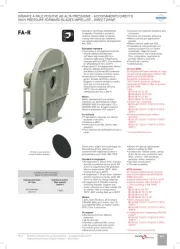
16 September 2025
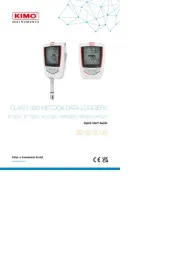
16 September 2025
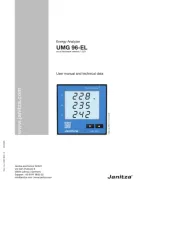
16 September 2025
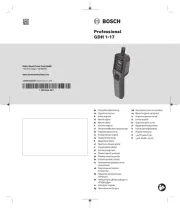
15 September 2025
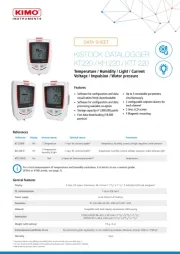
15 September 2025
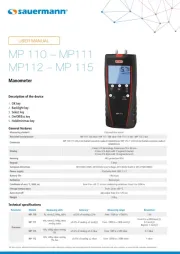
15 September 2025
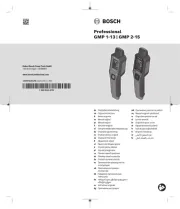
15 September 2025
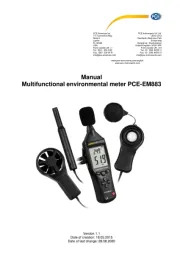
15 September 2025
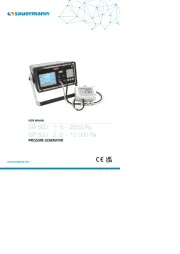
15 September 2025
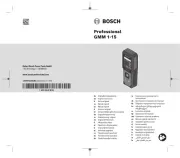
15 September 2025